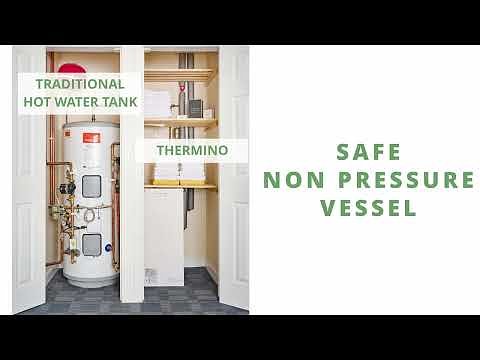
NYC Buildings Get a Space-Saving Boost in Race to Cut Emissions
A new thermal storage system is helping building owners in New York City comply with stringent emissions regulations – and overcome a major space constraint. The innovative tech offers a compact alternative to traditional hot water solutions.
NYC Buildings Get a Space-Saving Boost in Race to Cut Emissions
NEW YORK, NY – October 28, 2025 – As New York City pushes forward with ambitious plans to reduce carbon emissions from its vast building stock, a new technology is gaining traction, offering a potential solution to a common problem: limited space. Eco Edge Solutions recently announced a partnership with Sunamp to bring the company’s compact thermal storage systems, dubbed ‘heat batteries,’ to the U.S. market, with a particular focus on helping building owners navigate Local Law 97.
Decoding NYC’s Emissions Challenge
Local Law 97, enacted in 2019, sets strict limits on greenhouse gas emissions from buildings over 25,000 square feet. The legislation is designed to achieve a 40% reduction in emissions by 2030 and net-zero emissions by 2050. However, compliance requires significant investment in energy efficiency upgrades, often creating challenges for older buildings with limited space for new equipment. “The biggest obstacle isn't always the cost of the technology, but where to put it,” explains one energy consultant working with building owners in Manhattan. “Traditional hot water cylinders are bulky, and many buildings simply don’t have the room.”
This is where Sunamp’s Thermino system aims to differentiate itself. Using a proprietary phase change material (PCM) called Plentigrade, Thermino heat batteries store thermal energy with significantly reduced volume – up to four times smaller than conventional hot water cylinders. This compact design opens up possibilities for retrofitting energy-efficient hot water solutions in buildings where space is at a premium. “We’re seeing a lot of interest from building owners who were previously hesitant to invest in energy upgrades because of space constraints,” says a representative from Eco Edge Solutions. “This technology allows them to overcome that hurdle.”
How ‘Heat Batteries’ Work and Why They Matter
Unlike traditional hot water tanks that rely on water’s heat capacity, Thermino utilizes Plentigrade PCM. This material changes state from solid to liquid, absorbing and releasing large amounts of latent heat at a constant temperature. This process is incredibly energy dense, allowing for a much smaller storage volume. The Plentigrade technology was developed in collaboration with the University of Edinburgh and tested rigorously for durability. “The stability and longevity of the PCM are crucial,” says one materials scientist familiar with the technology. “We’ve seen a lot of PCM solutions come and go, but Sunamp’s formulation appears to be quite robust.”
Beyond space savings, Thermino offers other advantages. The compact design allows for faster installation and reduced labor costs. It’s compatible with various energy sources, including grid electricity, solar PV, and heat pumps, allowing building owners to integrate renewable energy systems. A low-amperage electric coil option is also available, making it easier to integrate the system in buildings with limited electrical capacity. According to case studies provided by Sunamp, Thermino installations have demonstrated significant reductions in greenhouse gas emissions and energy costs for both residential and commercial buildings.
Beyond Compliance: Long-Term ROI and Future-Proofing
While Local Law 97 is a primary driver for adoption, industry experts emphasize that Thermino offers a compelling long-term return on investment beyond mere compliance. Reducing energy consumption lowers operating costs, increases property value, and enhances a building’s sustainability profile. “Building owners are increasingly aware that investing in energy efficiency is not just about meeting regulations – it's about future-proofing their assets,” says one real estate investor. “Tenants are demanding more sustainable buildings, and investors are willing to pay a premium for properties with strong ESG ratings.”
The compact nature of the technology also lends itself to flexible installations. Building owners can tailor the systems to meet specific hot water demand. As a building’s energy needs change, the modularity allows for scaling the system up or down. With the increasing demand for electricity, thermal storage systems like Sunamp's can also play a role in load shifting, reducing peak demand on the grid. By storing heat during off-peak hours, buildings can reduce their reliance on expensive peak-hour electricity, further lowering operating costs and reducing strain on the grid.
Sunamp and Eco Edge Solutions are actively targeting projects in New York City, with several installations already underway. “We’re confident that this technology will become increasingly popular as building owners look for innovative ways to reduce emissions and improve energy efficiency,” notes the Eco Edge Solutions representative. “It’s a win-win for everyone involved – building owners, tenants, and the environment.”
